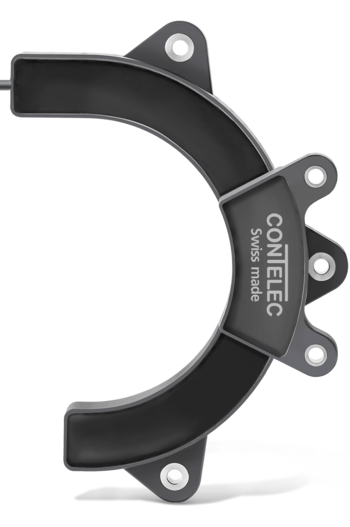Interfaces with inductive rotary encoders
Unlike potentiometers, inductive encoders with IC-M technology can be combined with digital interfaces.
Contelec’s magnetic measuring methods have proven their worth in numerous applications. In certain scenarios, however, inductive, non-contacting measurement technologies are better.
For example, linear sensors that use magnetic measuring methods can only be realized cost effectively up to a certain length. Inductive measurement technologies can also prove more suitable when it comes to hollow-shaft rotary sensors.
Until now, potentiometric solutions such as the products in Contelec’s WAL and GL series have been used for applications of this kind. As a result of their analog design, however, they are unable to make use of the possibilities offered by digital interfaces.
Digital interfaces thanks to inductive measuring methods
Where magnetic measuring methods are unsuitable, Contelec deploys inductive measuring methods – a long-established technology that is experiencing something of a renaissance thanks to advances in microelectronics and ingenious design. The variety of interfaces include:
- analog
- PWM
- SENT
- PSI5
Wear-free IC-M technology
Inductive angle and linear position measurement using IC-M technology operates on a non-contacting basis. It is suitable for linear sensors for position measurement from 15 millimeters to currently around 150 millimeters. In angle measurement, either the entire 360° can be measured or just a segment of the circle. In the latter case, accuracy is increased as the total resolution extends over a smaller angle range.
Inductive angle measurement is also suitable for applications that require a hollow shaft and, as in linear position measurement, allows sensors with vastly increased dimensions. The metal element is typically flatter than the magnetic actuator used with magnetic measuring methods, enabling more compact sensors. Very flat inductive sensor designs can also be realized.

